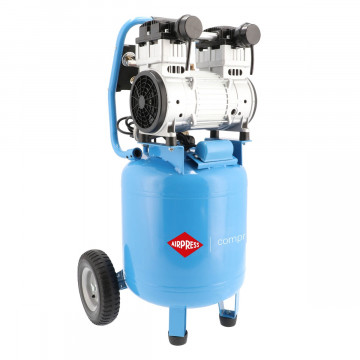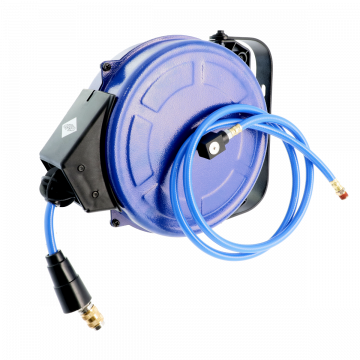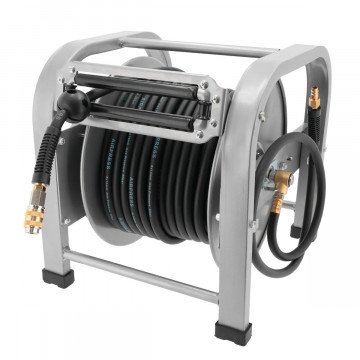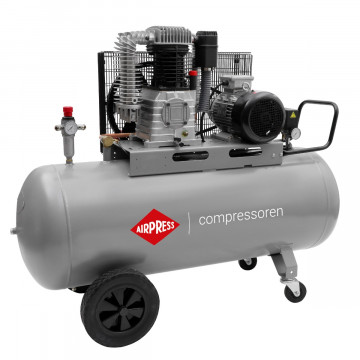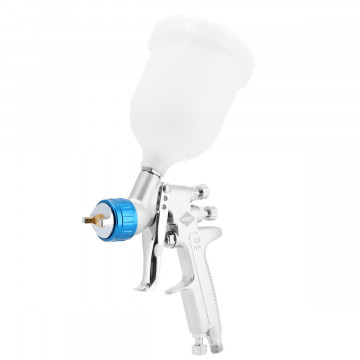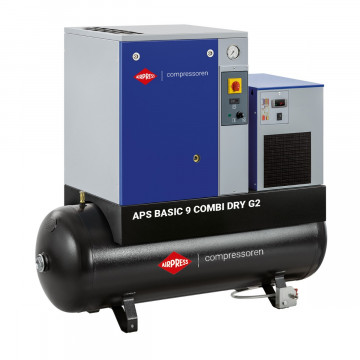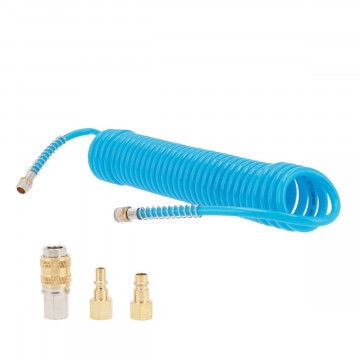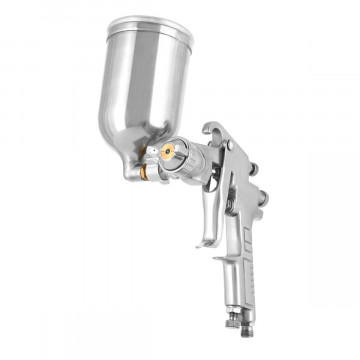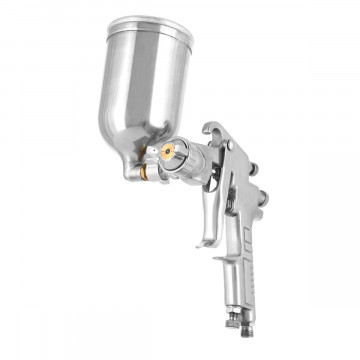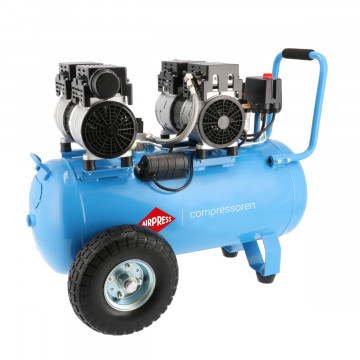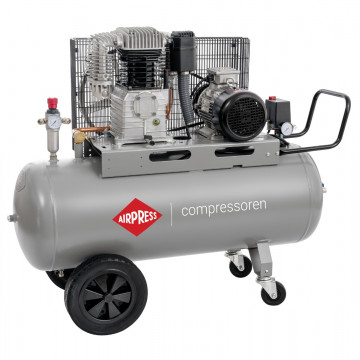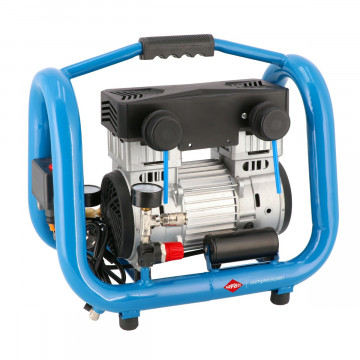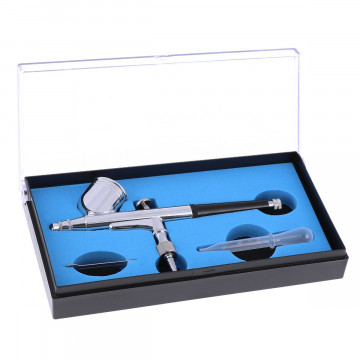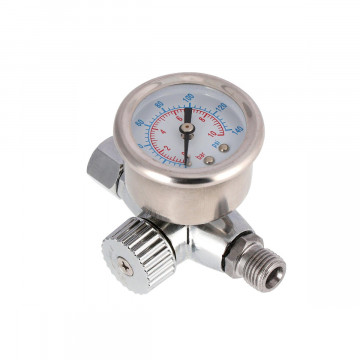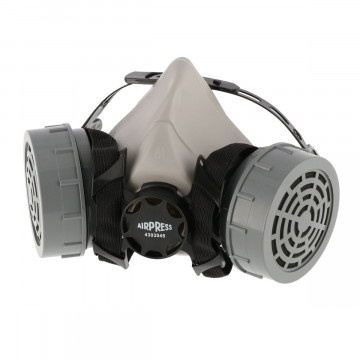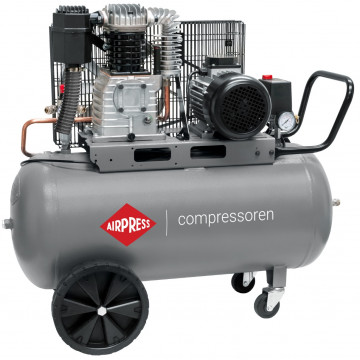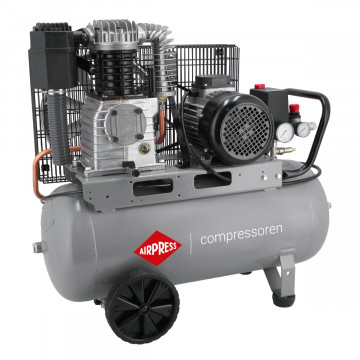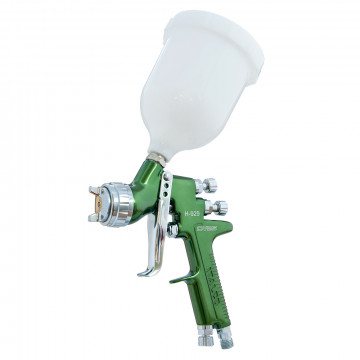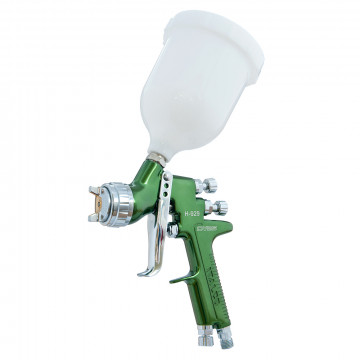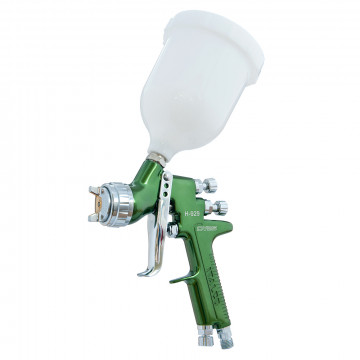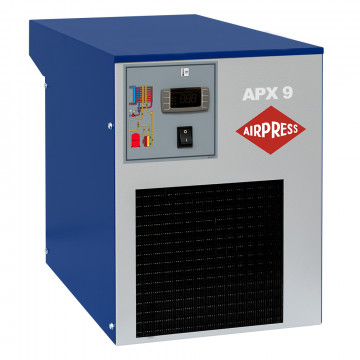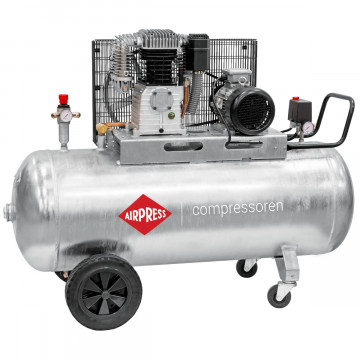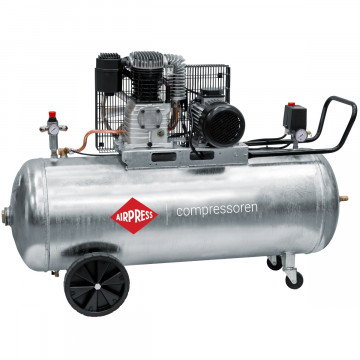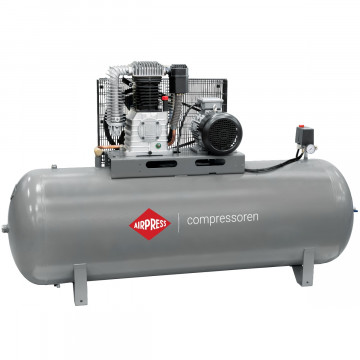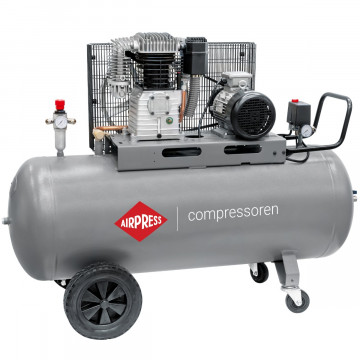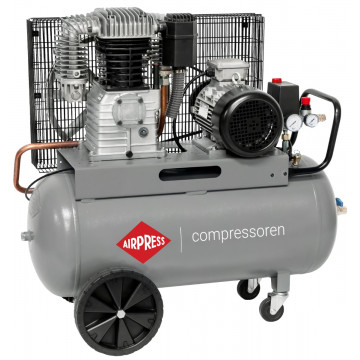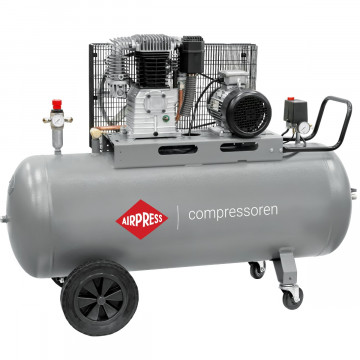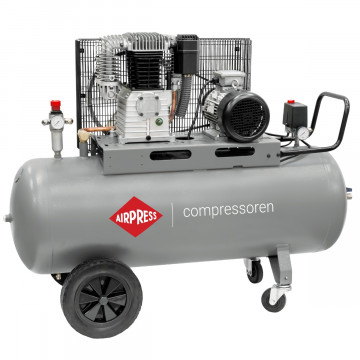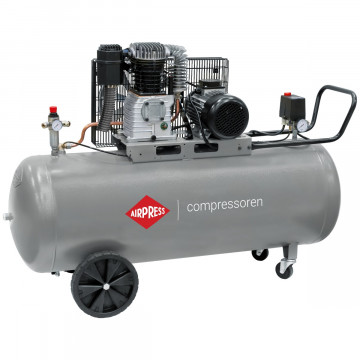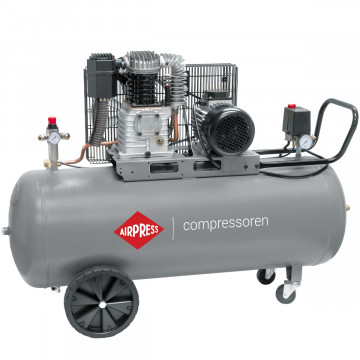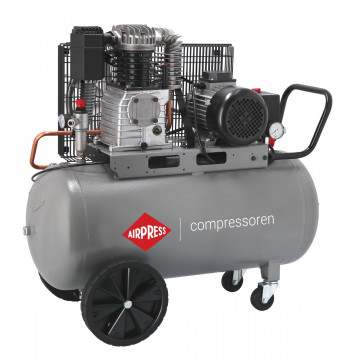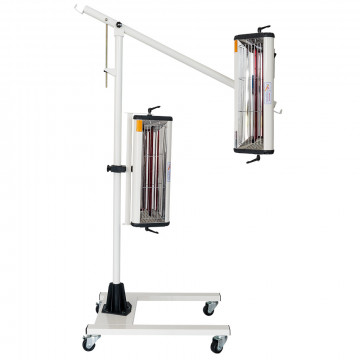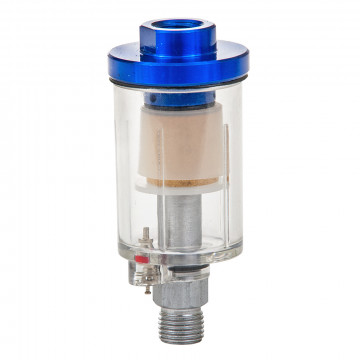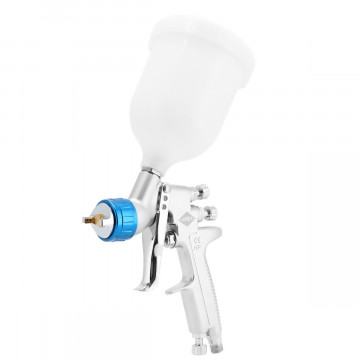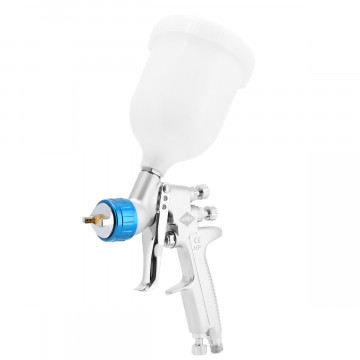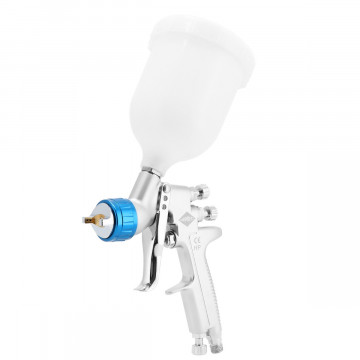Paint spray compressor
Airpress compressors for painting are essential tools in both amateur and professional painting and spraying applications. Using a compressor allows for quick and efficient paint or lacquer application while achieving a smooth and even finish. Compared to traditional brush or roller painting, using a compressor is far more economical and delivers superior quality results.
Our wide range of compressors is suitable for use in home workshops as well as professional paint shops. Thanks to the variety of available models, you can select a compressor that fits your project scope—whether you're painting small items like car rims or priming and spraying large surfaces such as car bodies or walls. For professional use, we recommend choosing higher-capacity compressors that can handle intensive workloads. Pneumatic tools and pneumatic accessories such as spray guns, hoses, and air filters can greatly enhance your work quality and comfort.
Choosing the right compressor largely depends on the type of painting work you plan to carry out. For spraying vehicles or covering large surfaces, compressors with larger tank capacity and airflow are ideal, as they ensure a continuous and stable air supply. For smaller hobby projects such as detail work with an airbrush or light-duty paint jobs, a compact compressor with lower capacity will be sufficient.
How to Choose the Right Compressor for Painting and Spraying?
Choosing a compressor for painting depends on several important factors that should be considered before making a purchase. The first is the compressor’s performance, which must match the air demand during painting. For painting compressors, it’s essential that the unit delivers sufficient power to efficiently supply a spray gun or airbrush. A minimum airflow of 200 l/min is recommended for small jobs like spraying car rims or small parts. For larger surfaces such as car bodies, compressors with over 500 l/min output are ideal.
Another key factor is the working pressure. Most painting compressors operate within a range of 6 to 8 bar, which is sufficient for most painting tasks. If you plan to spray large surfaces like entire vehicles, a compressor with a maximum pressure of 10 bar is recommended to ensure longer runtime and minimise frequent restarting.
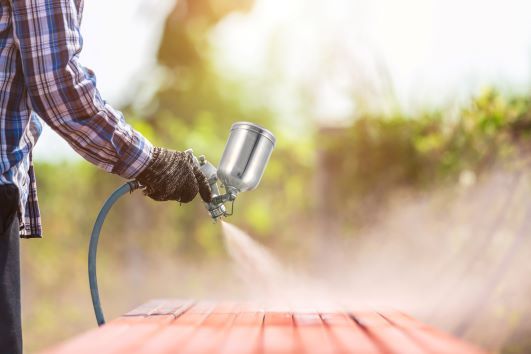
Compressor for Painting – Oil or Oil-Free?
This is a crucial question. The type of lubrication for friction components significantly impacts your results. Using an oil-lubricated compressor without proper equipment such as filters or dryers is not ideal for professional painting applications. Oil particles in compressed air can clog spray guns quickly.
A suitable solution may be an oil-free compressor, where internal friction parts are coated with a special wear-resistant layer.
Does that mean oil-free compressors are always the better choice? It depends largely on the size of the parts you’re painting. Occasional airbrushing or small hobby jobs with a compact oil-free unit work great for casual users.
Compressor for Wall Painting
For painting large surfaces (walls, fences or car bodies), an oil-lubricated compressor with a larger tank capacity of 50, 100 or even 200 litres will deliver significantly better performance.
However, it is essential to use appropriate filter sets suited to the surface being painted to avoid oil contamination in the paint. Proper operation of oil-lubricated compressors also requires filter replacements and regular servicing—often after just 50 working hours, depending on the model.
Compressor for Car Painting
If you’re spraying metal car parts, your compressor should be matched to the size of the job. For full resprays, we recommend at least a 100–150-litre tank. For minor touch-ups, a 50-litre unit will suffice.
Compressor for Car Maintenance
It’s important to match the tank size to your use case. A 24-litre compressor is great for decorators or model makers—perfect for tyre inflation or cleaning tasks. However, it will fall short for most other tasks. A 50-litre model is a versatile option for general use and suitable for painting larger items like vehicle body panels. For professional use, we recommend our PRO Series compressors with tanks over 100 litres. You may find them oversized for some tasks, but a larger air reserve will always improve your workflow and finish.
Already Have a Compressor? Let Us Help You Choose the Right Spray Gun!
The compressor is just the power source for the spray gun. Once you’ve bought your compressor, the next key step is selecting a suitable spray gun. The right gun should spray evenly—without dripping or sputtering paint.
Airpress paint guns come with pressure control to match specific paint types. They are available in many configurations (top, bottom, or side-feed tanks with various nozzle sizes). When selecting a spray gun, always consider its air consumption, which should not exceed your compressor’s output. A top-feed tank allows better control at low pressure, while a bottom-feed tank—usually larger—is great for larger surface areas.
Industrial Solutions
For industrial use—automotive factories or large paint shops—Airpress recommends screw compressors supported by large compressed air receivers, refrigerant dryers and professional filter systems.
These compressors allow multiple air outlets to run simultaneously without interruptions. Screw compressors reduce overall electricity costs as they don't need frequent rest periods like piston units. They offer excellent efficiency, automated control, and quiet operation. Some units even feature heat recovery for warehouse heating. Our APS X screw compressors include innovations like Wi-Fi connectivity and Android app control.
Key Takeaways for Choosing a Painting Compressor
Investing in the right compressor for painting or spraying will improve your results—whether in a home workshop or a professional paint shop. Focus on airflow, tank capacity, and operating pressure. For small-scale tasks, low-output units are sufficient, but for larger jobs like car painting, go for high-capacity, high-output compressors. Explore our full range of painting compressors and find the model that fits your needs!
